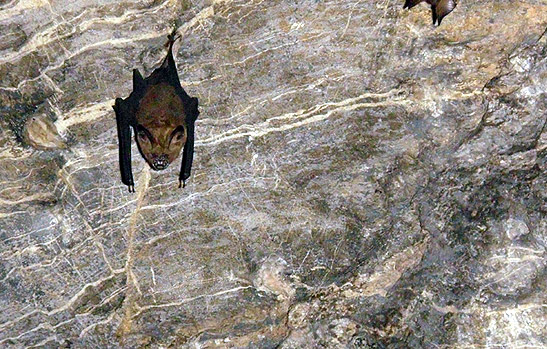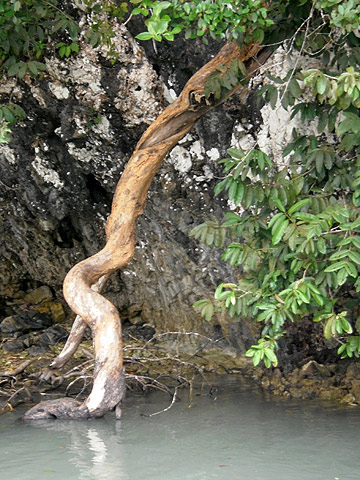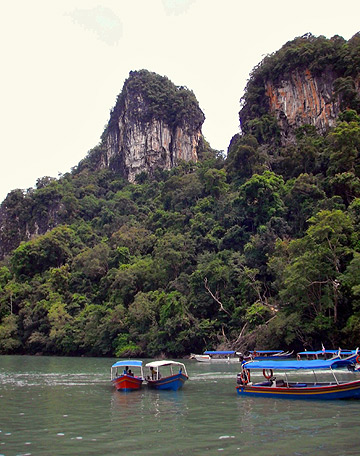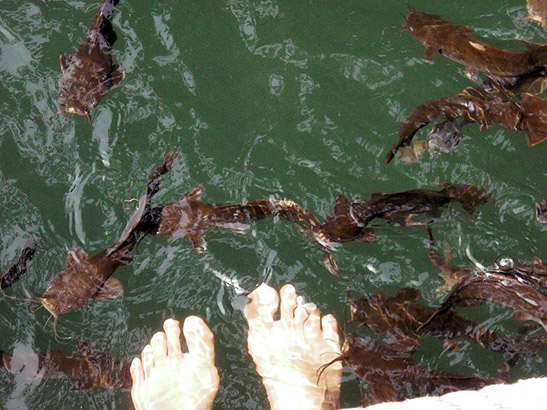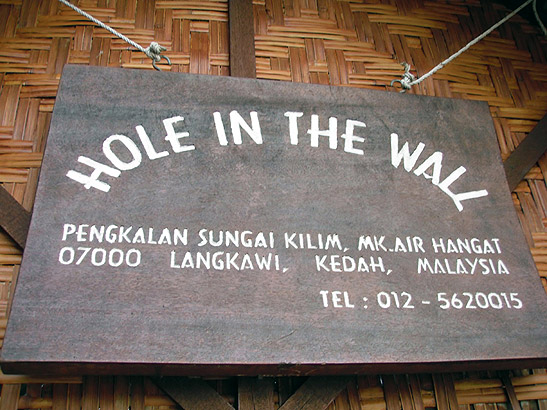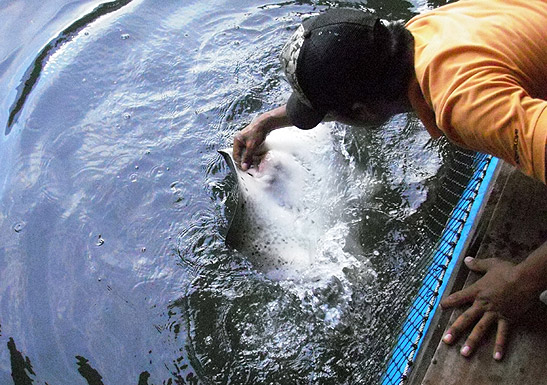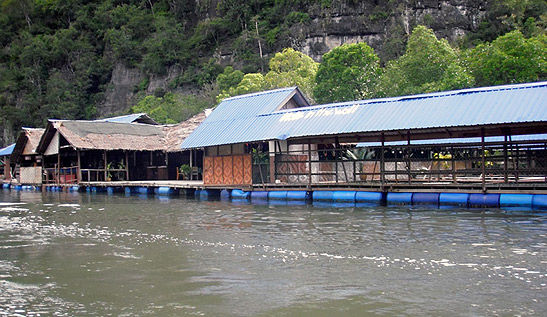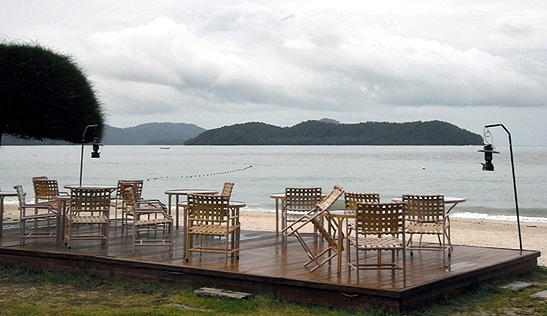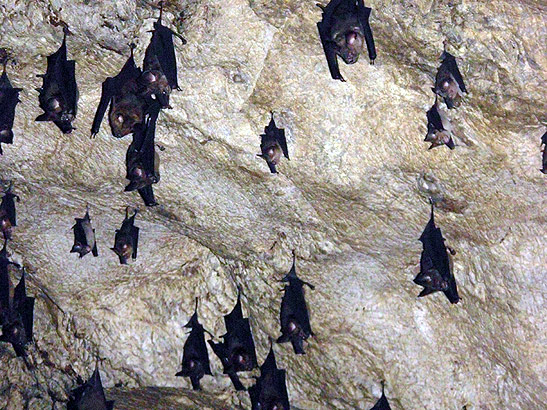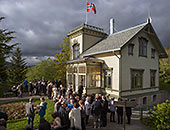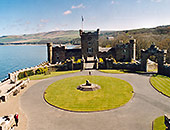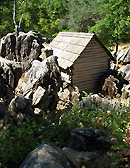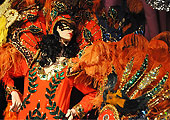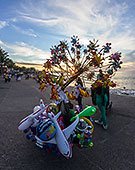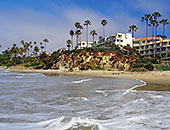 |
 |
|
 |

|
Langkawi:
Indeed, the road from the airport worms its way along the western coast, around a bend or two, and straight into a slew of high-end resorts. Diving gear and rental shops abound. Everything on the island is close to everything else, so the taxis don’t even use meters. They just charge set rates from one destination to another. If one wants to escape the throngs of tourists invading from the ferry jetty, one can rent a bicycle for dirt-cheap. Even though Langkawi is a tourist Mecca, relaxation comes quite easy.
Located 30 km from northern peninsular Malaysia, where the Straits of Malacca meet the Indian Ocean, Langkawi is an archipelago of nearly 100 islands, with Langkawi Island being the main attraction. It is a land of myths, mangroves and mystery. It was here, the legend goes, that a young woman named Mahsuri was executed for adultery. The townsfolk stabbed her to death and white blood flowed from her wounds, indicating she was actually innocent. She then cursed the entire island and her tomb is now a tourist attraction. Amazingly, Langkawi has only been developed since 1987. At first, there was only one hotel, the population was around 30,000 and the main activity was agriculture. Then the prime minister declared it a duty free island and away it went. During the first few years, the main tourists were the Europeans, who preferred a quiet isolated place with seemingly no authority. Over time, tourists from other Asian countries began to visit en masse and they preferred more activities, so more development eventually started to happen. Tourism boomed in the ensuing years.
Today, retail shopping, business complexes and commercial districts exist primarily in the town of Kuah near the ferry jetty, with other scattered retail villages here and there. Sporadic pockets of native civilization occupy everything else in-between. Independent shops and restaurants engage wanderers on a few streets, and traditional Malay wooden homes on stilts are omnipresent. Much of the island is an official UNESCO Geological Park, perhaps the only duty free one of its kind anywhere. One is instantly beckoned into the convoluted green shadows for some serious mangrove and mystery seeking. Depending on which ecosystem one enters, there are bat caves, monkeys, eagles, a cable car ride and a skybridge providing a spectacular view. One can even go to a catfish spa, where fish munch the dead skin off your feet. In the bat cave, literally hundreds of bats occupy their places on the ceiling and stalagmite formations a million years old continue to reshape themselves, ever so slowly.
At my request, the guide led me into a restaurant and fish farm named The Hole in the Wall. I guess it was the moniker that attracted me the most. Owner Rahmad originally built the eatery eight years ago as an addendum to an already existing fish export business that doubled as a pit stop for yachts traversing the surrounding waters. As the destination grew in popularity, he expanded the restaurant several times. Nowadays, every boat stops by for food or drinks. There’s a bar, a makeshift souvenir shop, an internet connection and 10 ample rooms at RM 55.00 per person. It is a common stop for all the mangrove tours, business travelers, weddings and even the occasional politician. There exist 25 cheap mooring docks for yachts, with many skippers often hanging out for months at a time.
In fact, it was the yachting community that originally chose the name Hole in the Wall, since the facility is located on a tiny passage off the Kilim River, right in-between two enormous limestone outcrops. Thus, a hole in the wall. “If the owner had chosen the name, he would have just thought of some other Malay name instead,” my guide tells me.
Attached to the restaurant are 60 cages where Rahmad breeds fifteen types of fish, including sea bass, red snapper, greasy grouper, sting rays, electric eels, archer fish, dart fish and more. For RM 5.00, one can watch a trained employee walk around on the planks and feed the fish, including the stingrays. There’s even a hanging bridge that leads 100 meters off into the mysterious mangroves. The entire facility literally floats on the water and you can even dine outside on the planks, while watching the fish swim by in the river.
Even though tourists now regularly flock to the island, Langkawi still somehow retains a passive laidback atmosphere. Natives staff almost all of the resorts, I’m told. When I arrived at the Pelangi Beach Resort, the bellhop who drove me to my chalet had worked at the property since the place first opened twenty years ago. It was the only job he’d ever had.
And each room at The Pelangi supplies a brown pamphlet describing all the native creatures inhabiting the resort property. For example, one must feel at ease with tiny geckos running across the bedroom walls and ceiling. Malays will tell you they’ve lived in harmony with house lizards for generations. Now that’s what I call local flavor. I vowed to return.
|
|
Your tea adventures are especially interesting because I've always associated tea with British etiquette or a bevy of women wearing dainty victorian costumes and sipping tea with their little pinky sticking out. To see Tea from a man's perspective brings new light in a man's psyche. I've been among the many silent admirers of your writings for a long time here at Traveling Boy. Thanks for your very interesting perspectives about your travels. Keep it up! --- Rodger, B. of Whittier, CA, USA
|
|
| ||||
|
| ||||
|
| ||||
|
| ||||
This site is designed and maintained by WYNK Marketing. Send all technical issues to: support@wynkmarketing.com

|






